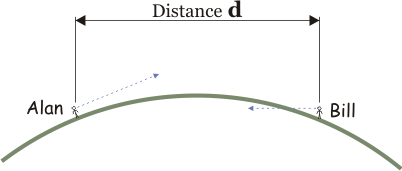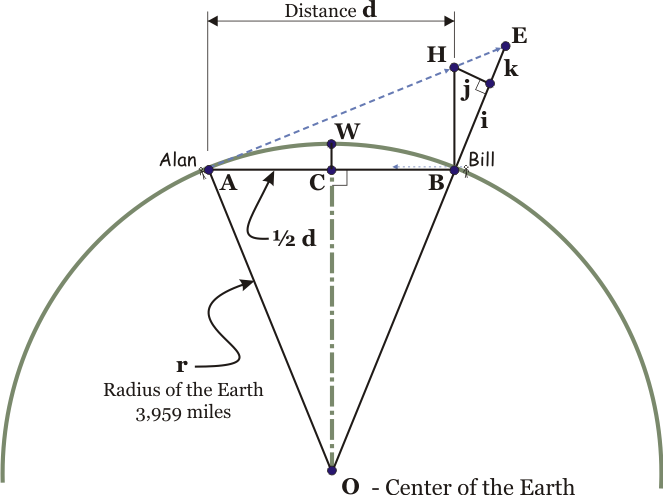
|

|

|
|
|
||||
|
Bill is leaning far forward so his line of sight points directly at Alan. Can Bill see Alan? We answer this question with a small amount of math. |
||||
|
||||
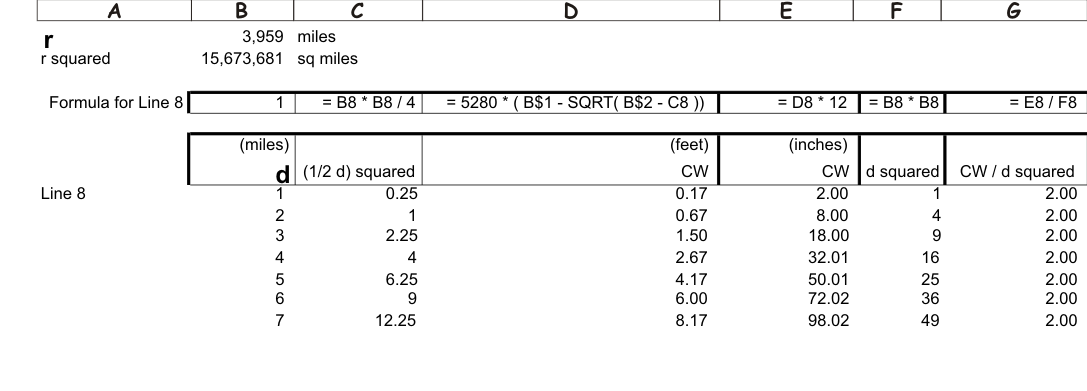
|
||||
|
Placing the formulas in a spreadsheet as shown and replicating down, we make a table for distance vs height. As you can see the height of the water bulge is about 2 inches times the square of the number miles of distance. The next question is how tall does Bill have to be before Alan can see him? If Bill keeps leaning forward, the answer will be given by the length of BH. If Bill stands straight up, the answer will be the length of BE. |
||||
|
Let's find the location of H. To do this, we have to solve the triangle ABH, This time we do not have the length of the hypotenuse but we know that angle H is the same as angle B because AH is perpendicular to AO. We also know that the tangent of angle B is OC / 1/2 d so we extend the spreadsheet as follows: |
||||
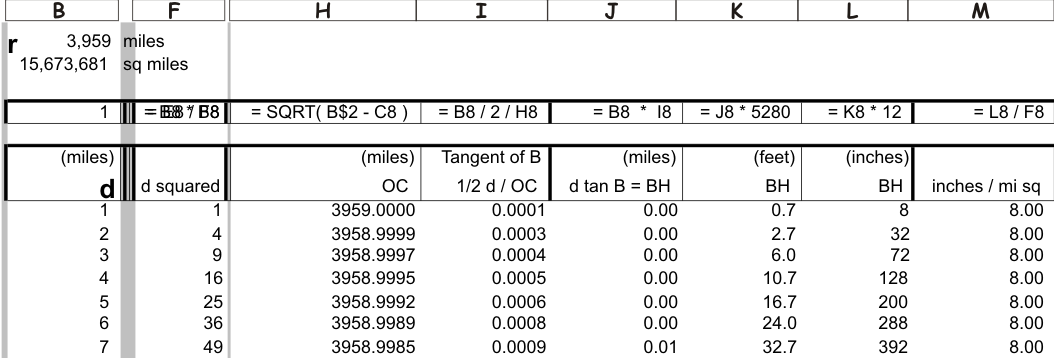
|
||||
|
As before, the height in inches is relative to the square of d. H per mi sq is almost exactly 8". To find the length of the line BE, we solve two more right angle triangles. The spreadsheet is wide after deriving j, i and k, so summary results are presented here for the three heights. The value is seen now in using the spreadsheet for the solution because we can replicate down to build a useful table. |
||||
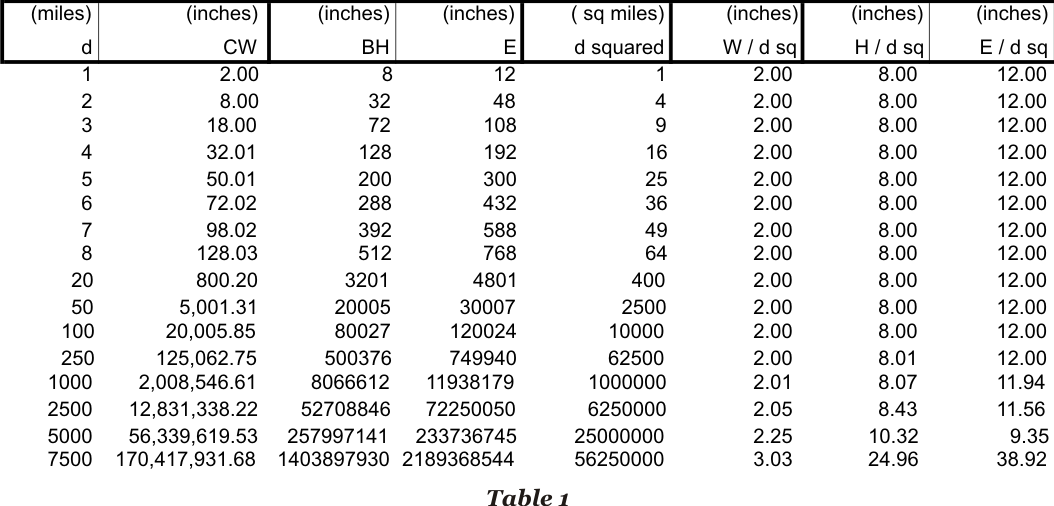
|
||||
|
This solution is not unique, but is chosen for simplicity as it uses only common trigonometry and can be performed with any spreadsheet or calculator. No trigonometric solution can be exactly linear because the Earth is curved, but as you can see, this solution can be considered exact for the first couple of thousand miles. |

|
|
|
|
|
|
|
|
|
